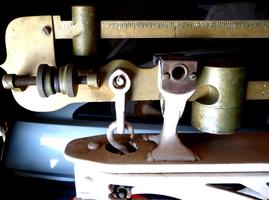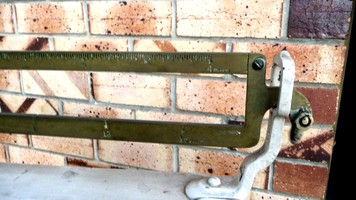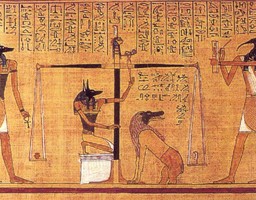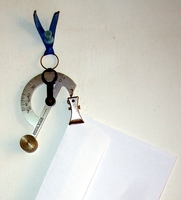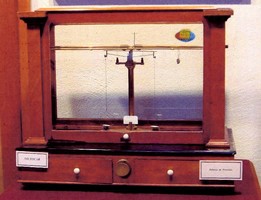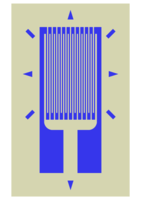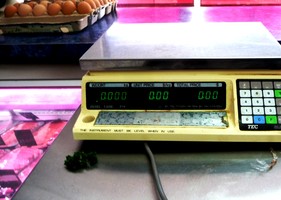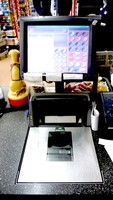
Medical and other weighing machines
Website for the Virtual Museum
Home
Coming meetings
Past meetings
About the Society
Main Galleries
Medicine
Surgery
Anaesthesia
X-rays
Hospitals,other organisations
Individuals of note
Small Galleries
Ethnic medicine
- Aboriginal
- Chinese
- Mediterran
Medical and other weighing machines
Acknowledgments: We are most grateful to Dr. Lamb of the Crafter Medical Centre who donated their scales to the Society, and Jan Hooper AO of the QEH Historical Society who allowed us to photograph some of the old hospital weighing machines.
Most items of medical heritage usually represent medical or surgical relics, however, there are some that are primarily used by traders and businesses. Scales are used to assess the weight, and hence cost, of various goods. Precious metals and gems sold by weight, and most butcher and vegetable shops have weighing scales.
In medical practice they are an important tool to calculate appropriate dosages of drugs and to monitor intended or unintended changes in a patients weight.
A MORE RECENT SET OF MACHINES (c. 1960), NO LONGER USED AND STORED WITH OTHER ELECTRONIC EQUIPMENT AT THE QUEEN ELIZABETH HOSPITAL. THE SCALES ARE ALSO ABLE TO MEASURE THE HEIGHT OF A PATIENT, AND THUS IT IS POSSIBLE CALCULATE THE BODY MASS INDEX, OR BMI (WEIGHT IN KILOGRAMS DIVIDED BY HEIGHT IN METERS SQUARED).
THE NEXT FEW COMMENTS REFER TO BRIEF HISTORY AND RECENT DEVELOPMENTS OF VARIOUS WEIGHING MACHINES
EGYPTIAN SCALES FROM THE "BOOK OF THE DEAD" (c. 1800 BCE). NONE HAVE SURVIVED, ALTHOUGH SOME SETS OF STONES WITH ENGRAVED WEIGHTS HAVE BEEN FOUND.
SMALL ITEMS, GEMS AND GOLD WERE WEIGHED USING CEREAL CROP GRAINS. THE WORD CARAT IS DERIVED FROM THE GREEK WORD KERATION, MEANING "CAROB SEED". CAROB SEEDS ARE A FORMER STANDARD FOR THE WEIGHING OF SMALL QUANTITIES.
As with the early Egyptian scales, most weighing machines had a rod or a beam resting on a central fulcrum. The ends of the beam were provided with containers. If the beam was horizontal, the unknown weight was the same as the known reference weight on the other side.
As balance weighing machines measure the force, not mass, of an object, the fulcrum need not be in the centre. The beam is level when the torque on both sides of the pivot are equal. Given the distances and a known mass, the unknown mass can be calculated.
One advantage of balance scales is that force of gravity is canceled out, meaning that the scale does not need to be calibrated to the local gravity field, unlike spring scales.
The longer arm had notches along which a standard mass could be moved to determine the weight on the other arm. This means that fewer standard masses are needed to weigh a greater range of unknowns.
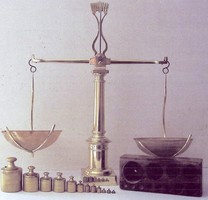
A STANDARD WEIGHING MACHINE USED LAST CENTURY. THE CENTRE POINT (FULCRUM) HAS TWO EQUI-DISTANT LEVERS SUPPORTING DISH CONTAINERS.
ON THE RIGHT IS AN EXAMPLE OF THE LEVER TYPE OF SCALES. THE WEIGHTED ITEM, USUALLY A LETTER, IS SUSPENDED BY THE CLIP ON THE RIGHT SIDE. THE WEIGHT OF THE LETTER CAN BE READ FROM THE SCALE. FOUR HUNDRED YEARS BC SUCH SCALES WERE KNOWN AS THE BISMAR AND WERE NOTED FOR THEIR DOUBTFUL ACCURACY, AND COULD EASILY BE MANIPULATED BY THE SELLER.
There have been numerous additional improvements from many inventors, such as Leonardo da Vinci, and Richard Salter (spring scales). Early improvements included reducing the friction at the fulcrum. This was done by sharpening the fulcrum into a V, or into a blade, reducing the contact area, and friction. A later improvement was to place the sharp V-shaped fulcrum on a shallower V-shaped bearing.
Pointers orthogonal to the beam at the fulcrum can also used, magnifying the deflection of the beam from horizontal.
Other machines had complex levers, hydraulic or pneumatic components to measure weights of trucks and railway wagons to determine toll charges.
Spring scales measure the extension or compression of a spring due to the force of a mass. By measuring this distance, and knowing the spring constant, is is possible to determine the force, and hence weight of the object, which may be shown on a dial, or in a sliding window.
The spring may be pulled down/extended by the mass, as in some grocery stores; or compressed, eg in a bathroom scale.
These scales are affected by gravity and heat, and may need to be calibrated, depending of the accuracy desired.
A similar method uses a strain guage. A strain gauge works by sensing the change in electrical resistance of a conductor. The gauge is securely attached to a beam. The beam is anchored at one end, with the load to be measured on other end. The load causes the beam to bend, stretching or compressing the strain gauge. The conductor lengthens and thins, increasing the resistance; or shortens and thickens the path, decreasing the resistance. This change in resistance causes a change in the voltage drop across the gauge. This can then be used to calculate the strain.
As the maximum force they can measure is dependent on the deflection resistance of the beam, and the output from multiple beams can be combined, this allows very heavy objects to be weighed.
This allows strain gauges to be used in many situation, from small loads in lab or kitchen scales, up to trucks, rail cars, and beyond.
As one might expect, strain gauges can be affected by the temperature (thermal expansion, resistance, etc), electro-magnetic interference, non-linearity, etc. These should be compensated for by the designers.
-o0o-

